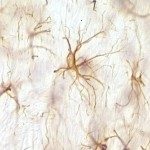Lien vers Pubmed [PMID] – 16123136
Proc. Natl. Acad. Sci. U.S.A. 2005 Sep;102(36):12855-60
Crystallographic analysis of human Hfe has documented an overall structure similar to classical (class Ia) MHC molecules with a peptide binding groove deprived of ligand. Thus, to address the question of whether alphabeta T cells could recognize MHC molecules independently of bound ligands, we studied human and mouse Hfe interactions with T lymphocytes. We provide formal evidence of direct cytolytic recognition of human Hfe by mouse alphabeta T cell receptors (TCR) in HLA-A*0201 transgenic mice and that this interaction results in ZAP-70 phosphorylation. Furthermore, direct recognition of mouse Hfe molecules by cytotoxic T lymphocytes (CTLs) was demonstrated in DBA/2 Hfe knockout mice. These CTLs express predominantly two T cell antigen receptor alpha variable gene segments (AV6.1 and AV6.6). Interestingly, in wild-type mice we identified a subset of CD8+ T cells positively selected by Hfe that expresses the AV6.1/AV6.6 gene segments. T cell antigen receptor recognition of MHC molecules independently of bound ligand has potential general implications in alloreactivity and identifies in the Hfe case a cognitive link supporting the concept that the immune system could be involved in the control of iron metabolism.


